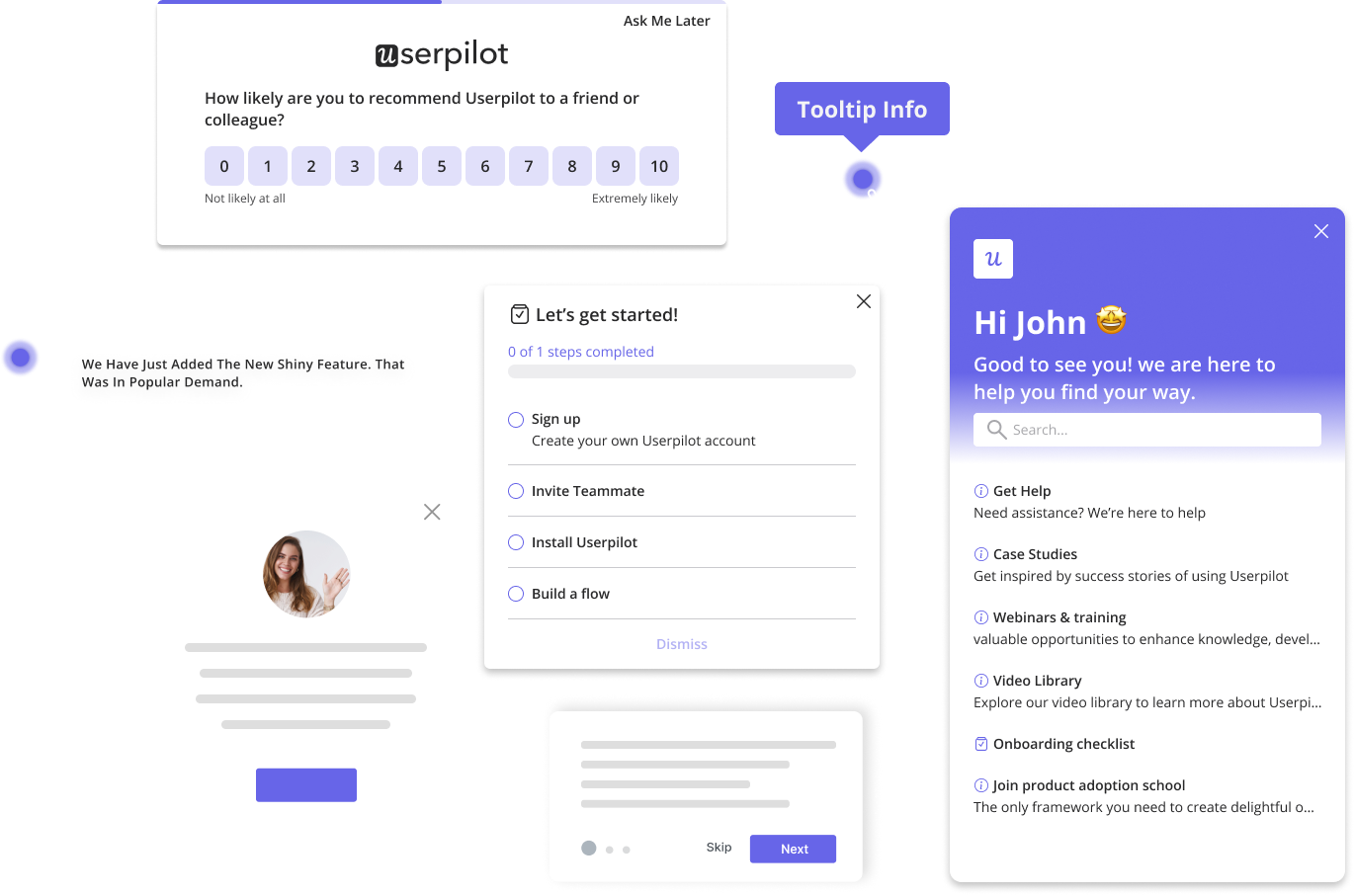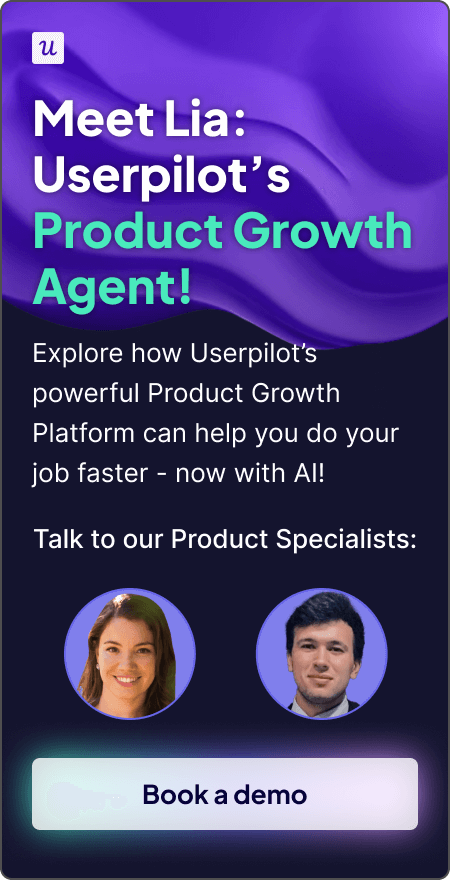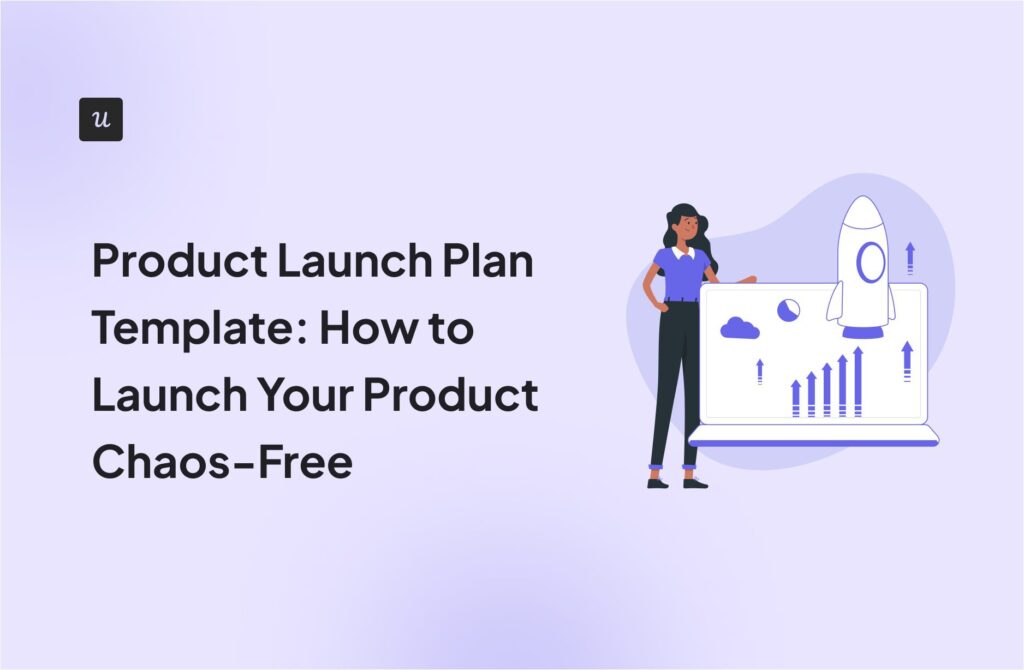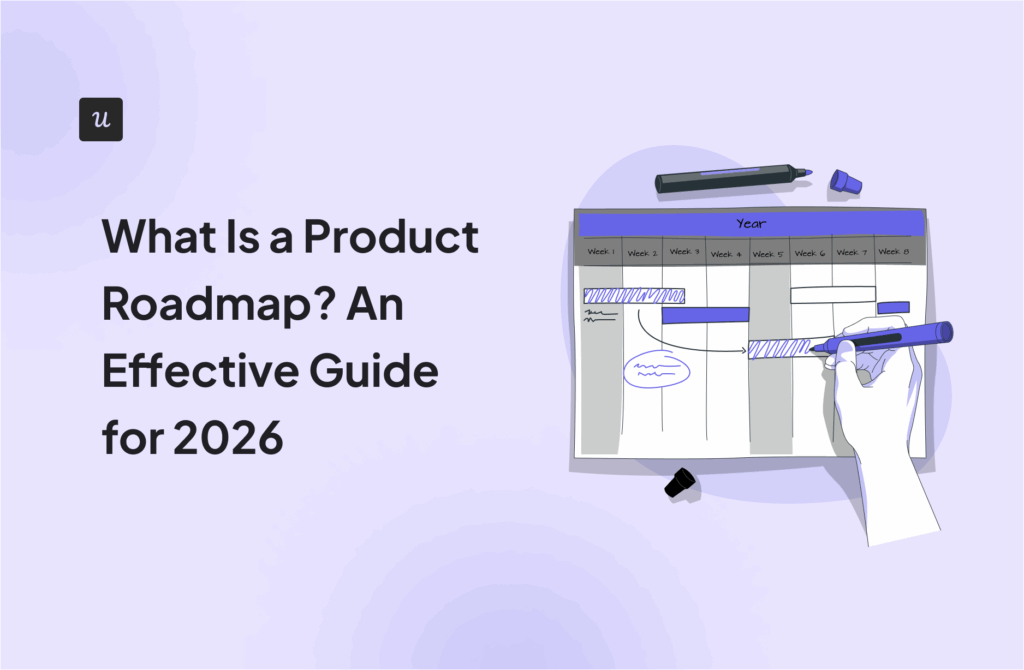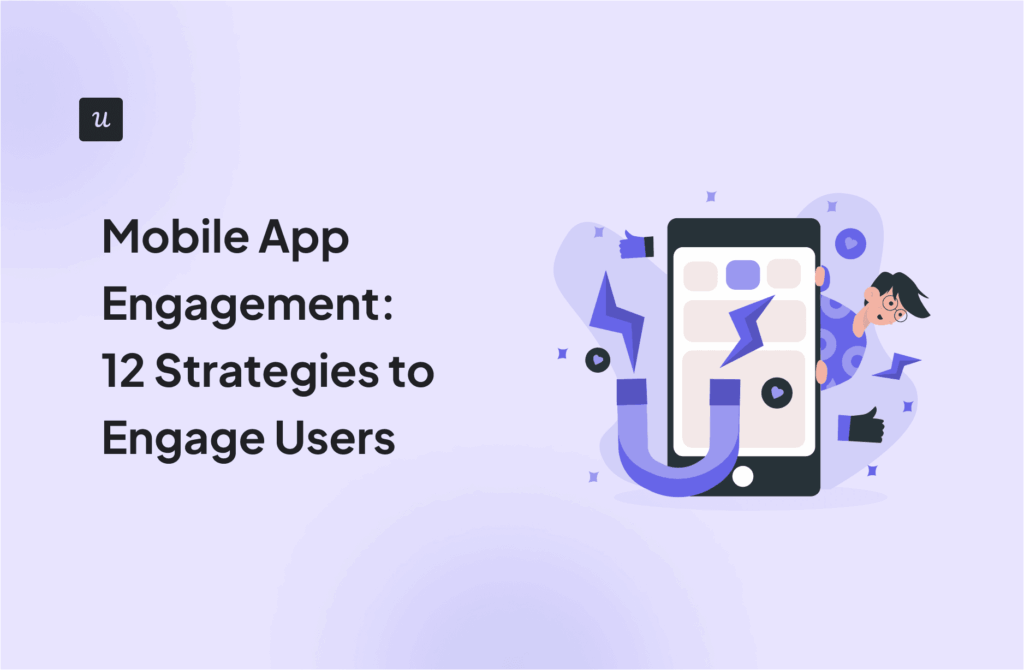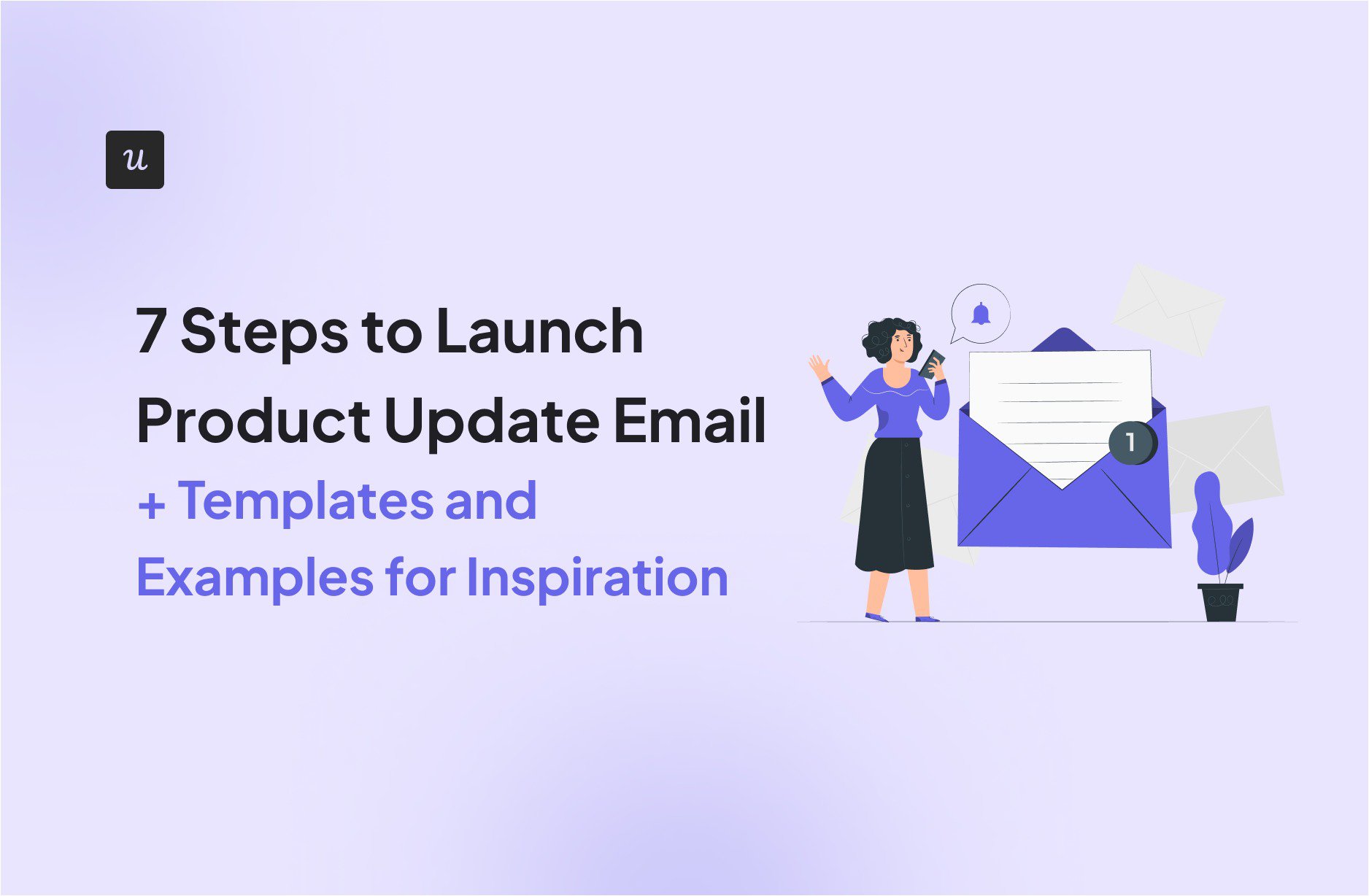
7 Steps to Launch a Product Update Email (+Templates and Examples for Inspiration)
Product releases don’t create impact on their own; user adoption does. That’s why every product update needs more than a deployment; it also requires a compelling announcement. A product update email is one of the most effective ways to ensure users understand the change, recognize its value, and take action.
In this guide, I’ll break down the 7 steps to crafting update emails that do exactly that. You’ll also get proven templates and real-world examples for inspiration.
What’s the biggest challenge with your current product update email process?
How do you currently segment users for a product update email?
What’s the main goal for your next product update email campaign?
It’s time to level-up your product update email strategy.
Based on your answers, personalizing communication and targeting users based on their behavior can significantly boost your engagement and adoption rates. A great product update email is just one part of the puzzle. Userpilot can help you send the right message to the right user at the right time, both via email and with in-app messages.
Try Userpilot Now
See Why 1,000+ Teams Choose Userpilot
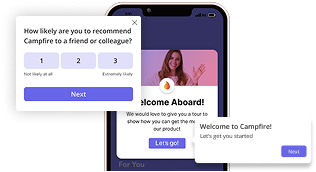
What goes into a product update email?
The best product update emails share six core elements to drive user engagement and feature adoption.

- A personalized greeting that includes the recipient’s name and, when possible, references their specific usage patterns or company.
- An engaging subject line that combines curiosity with clear value. Research shows that subject lines with specific benefits get 26% higher open rates than generic announcements.
- Value-driven copy that focuses on user outcomes rather than technical specifications. The phrase “Save 3 hours per week on reporting” is more effective than the phrase “Updated export functionality.”
- Visual elements like screenshots show what changed in your interface, while GIFs demonstrate the new workflow steps users need to follow, eliminating confusion about how to access or use new functionality.
- A clear call to action that guides users to try the feature out immediately. You want to use specific CTAs like “Try the new dashboard in 1 click” instead of a generic “Learn more.”
- A feedback request section to ask users for their thoughts shows that you value their input and helps you gather user insights for improvements.
Beyond these basics, you can also send emails based on users’ actual product usage.
For example, if you’re announcing a new analytics dashboard, segment users who’ve accessed reports more than 10 times in the past month. Then say something like, “Remember those custom filters you’ve been requesting? They’re finally here.”
Types of product update email templates
Through my analysis, I’ve noticed that successful companies match their communication style to both the update type and the user journey stage. Here are the ten email types that consistently drive adoption.
1. Teaser and sneak-peak emails
Teaser emails build anticipation before major releases and give users a sneak peek of upcoming features. Send these to your most engaged users and power customers one to two weeks before launch to generate buzz and get users excited.
Also focus on people who’ve requested similar functionality or shown interest in beta programs.
👍 What makes Asana’s teaser email great: Asana’s “Coming soon!” email perfectly demonstrates how to connect user feedback to product development. It opens with “You asked for more ways to customize your work in Asana. You got it,” which quickly validates that this update was user-requested and creates excitement.

The email provides a visual sneak peek of the My Tasks board view to create excitement while avoiding overwhelming users with technical specifications. And the feature preview list sets clear expectations without overpromising capabilities.
2. Beta testing invitation emails
Beta invites need to strike a balance between exclusivity and setting realistic expectations about potential bugs or incomplete features. You also need to define who an ideal beta tester is before segmenting.
For instance, you could pick users with high engagement or who have actively requested similar functionality to try the updates. Send these two to four weeks before the public launch.
👍 What I love about Mailchimp’s beta invite email: Mailchimp’s beta invite email creates genuine exclusivity with “We’re giving you early access to our new website builder.”

What I love about their approach is how they build empathy first by acknowledging real business challenges, “running a small business means navigating uncertainty and doubt,” before introducing their solution.
They go further by addressing potential obstacles like domain purchasing, hosting, and sign-up pages that might prevent readers from trying their new feature, removing friction before it becomes a problem.
3. Product release emails
When you want to officially launch a new feature, you send release announcements to your entire user base. The announcement needs to clearly convey the key benefits, how to access the feature, and what to expect, without overwhelming users.
These work best when sent on the day of release during peak user activity hours when engagement rates are highest.
👍 How Pitch does their release email: Pitch’s product launch email perfectly captures the transition from private beta to public launch with “We’ve launched — Now anyone can sign up for Pitch.”

They build credibility by talking about the “more than 25,000 teams” they’ve onboarded and positioning the product with a clear value proposition: “uncompromisingly good presentation software, built to help modern teams move faster.”
I also love their simple, to-the-point design. Just the logo, a few lines, and a CTA.
4. New feature announcement emails
Feature announcements work best for incremental improvements rather than major launches. I recommend sending these within 48 hours of features going live to maximize feature adoption and gather real-world feedback quickly.
👍 What I love about Buffer’s feature announcement email: Buffer’s email opens with a screenshot of actual user feature requests, immediately establishing that the feature was built based on user feedback.

The subject line, “Our most requested feature of 2023 is here!” creates relevance for anyone who has provided feedback while also building curiosity for everyone else.
They break down benefits into specific outcomes and include step-by-step instructions to make adoption feel effortless rather than overwhelming.
5. Product pricing change announcement emails
When you’re ready to raise prices, you need to communicate the change.
But pricing changes require extra sensitivity and transparency since they directly impact customer retention. The content must clearly explain the change, why it’s changing, and how it affects each user segment in a confident yet empathetic tone.
Send these 30–60 days before changes take effect, with messaging tailored to the subscription tier.
👍 Upwork’s pricing change email: Upwork’s pricing change email shows how to reframe a potentially negative announcement as an opportunity with their opening: “We are very excited to announce our newly simplified flat fee structure.”

They immediately clarify the user benefit with “dramatically lower the fee on all new relationships” and provide clear grandfathering details for existing users.
The smart move here is how they pivot to platform enhancements, positioning the price change as part of broader improvements rather than an isolated adjustment.
6. Bug and technical fix emails
Bug fix emails serve two purposes: they inform users about resolved issues and demonstrate your commitment to product quality.
If your app had a one-off glitch that you caught and fixed, send the email only to the affected users. But send it soon after deploying and verifying the fix, rather than allowing time for a customer to reach out.
👍 Bug fix email from Willow’s CEO: Allan, the CEO of Willow, personally acknowledged the downtime with a clear subject line: “Sorry about the downtime this morning!”

He clarified the issue, outlined the solution, and offered practical next steps without wasting time.
Now, I understand this style doesn’t fit into everyone’s brand guidelines. But it helps to send a personal note when such bugs happen, so your customers feel that connection.
It’s also nice to see Alan use the opportunity to get feedback. This helps with user retention and lets them know the company is willing to improve the user experience.
7. Product revamp emails
A major user interface redesign generally means asking people to relearn how they use your product. Product revamp emails help you announce these changes, and the messaging justifies the need for users to relearn how to use the product.
Send this email at least 1 to 3 days before changes go live, so users have time to prepare for the transition. And if possible, allow users to switch to the old UI to avoid hampering their productivity.
👍 ProdPad’s revamp email: ProdPad’s revamp email uses the subject line “You Asked, We Listened” to position changes as user-driven rather than company-driven decisions.
The opening line gives the big change a positive spin by saying, “…replaced with something way better!”

They directly address user feedback with “You wanted speed and performance? You got it. Want a slicker, more intuitive UX? You got it.” This messaging makes users feel heard and validates that the disruption serves their needs.
8. Terms and conditions update emails
Legal updates require 30-day advance notice in most jurisdictions. The challenge is making legal communications feel user-friendly rather than threatening.
Make sure your emails are clear, compliant, and reader-friendly. Explain what’s changing and when changes take effect in simple language instead of relying on legal jargon that people simply glance over.
👍 Udemy’s terms update email: Udemy chose to communicate their terms update in a simpler, more friendly way. Instead of dense legal text, they open with a clear “We’ve updated our terms of use.”
I like how their email includes a helpful summary section that saves users from reading the full fine print.

And the final reassurance, “There is no action required on your end,” is an added touch that helps turn this legal notice into a demonstration of user-focused improvements.
9. Yearly and monthly product update roundups
If you’re shipping updates frequently, batch them into regular roundups summarizing multiple product updates rather than sending individual announcements.
Roundups help your most engaged customers stay current with the improvements in your product while demonstrating an actively improved product.
👍 Descript’s roundup email: Descript organizes multiple updates into distinct sections with a clear visual hierarchy, making the email easy to scan and dive deeper where relevant.

Each feature has its own dedicated space with “Learn more” buttons so users can choose which features they’d like to learn more about. I like their use of a playful, conversational tone, which keeps the potentially dry update content engaging. It’s quite refreshing and genuinely had me hooked till the end.
10. Post-launch follow-up emails
Sending a product update email isn’t the end. Post-launch follow-up emails help you check in with users. You generally send these 1-2 weeks after the launch, so users have had enough time to play around with the features.
With post-launch emails, you want to gather feedback, address common questions, and encourage users to engage with the functionality.
👍 Canva’s follow-up email: Canva’s email is designed to reignite excitement after a major product update, targeting those who haven’t engaged with the feature (something you can do with Userpilot’s product analytics).

The visuals also provide a summary of the changes, which include the collaboration features (notably, the cursor is now named) and a preview of the actual interface.
How to launch product update emails in 7 steps
I’ve refined this process through dozens of product launches. Here’s the seven-step framework that consistently drives feature adoption.
1. Decide whether the update warrants an email
If product teams had a choice, they would announce every change they’ve made. We all love recognition for our work. But your users aren’t interested in all updates or minor software bug fixes.
Each unnecessary email trains users to ignore future messages. When you finally have something genuinely important to share, fewer people will pay attention.
Reserve email announcements for updates that genuinely change how users accomplish their goals or solve problems they’ve complained about.
For everything else, use this framework to determine your best communication channel:
| Tier | Type of update | Communication channel |
|---|---|---|
| Tier 1 | Major feature release or redesign | Dedicated email |
| Tier 2 | Medium update with some user impact | In-app message |
| Tier 3 | Minor fixes or behind-the-scenes work | Changelog or help docs |
| Tier 4 | Security patches or technical improvements | Support documentation |
2. Authenticate your domain to ensure email deliverability
The most compelling product announcement fails if it lands in spam.
To make sure that doesn’t happen, you need three things properly configured: SPF records, DKIM, and DMARC.
- SPF records inform receiving servers which IP addresses can send emails from your domain.
- DKIM adds digital signatures to verify your messages are legitimate.
- DMARC gives email providers instructions for handling messages that fail authentication.

And in my opinion, most teams should just go with a reliable email marketing platform instead of handling emails in-house. They offer superior analytics and deliverability optimization that’s almost impossible to achieve without constant maintenance.
3. Define user segments to personalize messaging
You could send the same email to everyone, but it wouldn’t be as effective as tailoring messages for specific user segments.
For instance, a power user who’s been with you for two years has completely different context and interests than someone who signed up last week.
I generally segment users based on three main factors: user behavior, subscription tier, and user engagement patterns.
So when you’re announcing new analytics features, you could talk more about advanced reporting capabilities to your experienced users, while new users would only need basic setup guidance.
You don’t need to go deep with segmenting right away. Even basic segments like “new users,” “active users,” and “enterprise customers” can give you better results than blasting the same email.
After all, the goal is to make each user feel like the update was designed specifically for their situation and needs.
4. Develop benefits-focused copy that resonates with your users
Most product teams get excited about the technical details of what they built. But you should instead focus on user outcomes rather than technical specifications.
“Save 2 hours per week on reporting” resonates more than “We’ve updated the export functionality” because it connects to something users actually value.
Basically, your copy needs to immediately answer the user’s question, “What does this update mean for me?” before talking about features or implementation details.
5. Incorporate engaging product visuals
The adage, “A picture is worth a thousand words,” is quite relevant to update emails.
Visual content increases email click-through rates by 42%. And it helps users understand complex features more effectively than text descriptions alone.
Use screenshots for interface changes, GIFs for workflow demonstrations, and short video clips for complex feature explanations.

The right tools can help with creating interactive emails. For instance, Userpilot offers an intuitive no-code email editor that allows you to add visuals by simply dragging and dropping image blocks within your email body.
The best solutions allow you to build, test, and send targeted, professional-looking product updates from a single interface.
6. Configure email targeting and scheduling
You first need to know “who” your target audience is. Otherwise, “when” you send the message won’t matter.
So start with your audience segments and make sure each group receives different messaging. For instance, new users need basic feature introductions, while experienced ones care more about advanced capabilities or integrations.

Userpilot helps you easily create audience segments, send precisely targeted messaging, and schedule sends based on timing and behavioral triggers.
B2B tools typically see better engagement during work hours adjusted for the recipient’s timezone, while consumer apps perform better in the evenings when people are free.
Test different times with small segments before committing to large sends. Your data will tell you more about your users than general “best practices” ever will.
7. Track performance and iterate
Monitor open rates and click-through rates. But remember that the primary goal of update emails is feature adoption.
So I usually create a simple funnel: email sent → opened → clicked → feature accessed → used.
This shows me (and our product teams) exactly where users drop off and helps me optimize future communications.
With Userpilot’s analytics dashboard, this tracking is straightforward. You see delivery rates, engagement metrics, and user activity all in one view, segmented by audience or time period.

The most valuable insight comes from connecting email performance to product usage.
If your email achieved a 25% click rate but only 3% of recipients actually used the feature, your messaging might not be setting proper expectations. And if clicks are low but feature adoption is high among those who clicked, your targeting is working, but your content needs work.
The goal isn’t to get it right the first time. Instead, focus on building a system that improves with each update you announce. Track what works, learn from what doesn’t, and continuously refine your approach based on real user behavior data.
Make the most of product updates with Userpilot
Product update emails work best when they’re part of a coordinated omnichannel communication strategy.
If you’re looking for the perfect way to execute this strategy, try Userpilot. It helps you orchestrate the entire communication from one platform. You can trigger emails based on user behavior, segment your audience for personalized messaging, and track whether people actually use the features you announce.
Want to bring all your communication under a single platform? Book a demo with Userpilot and experience exactly how you can turn your product updates into adoption wins.
FAQ
What's a product update email?
A product update email is a targeted message you send to users when you’ve built something new, fixed something that was broken, or made changes to how your product works. These emails work best when they focus on what the update means for the user rather than just announcing what you’ve shipped. The goal is to drive adoption and keep users engaged with your product.
How do I announce product updates?
You can announce product updates through a multi-channel approach that includes email, in-app notifications, and documentation updates. Start by segmenting your audience based on relevance. Then, craft benefit-focused emails and messages, add visual demos of the new features, and provide clear next steps for users to try.

